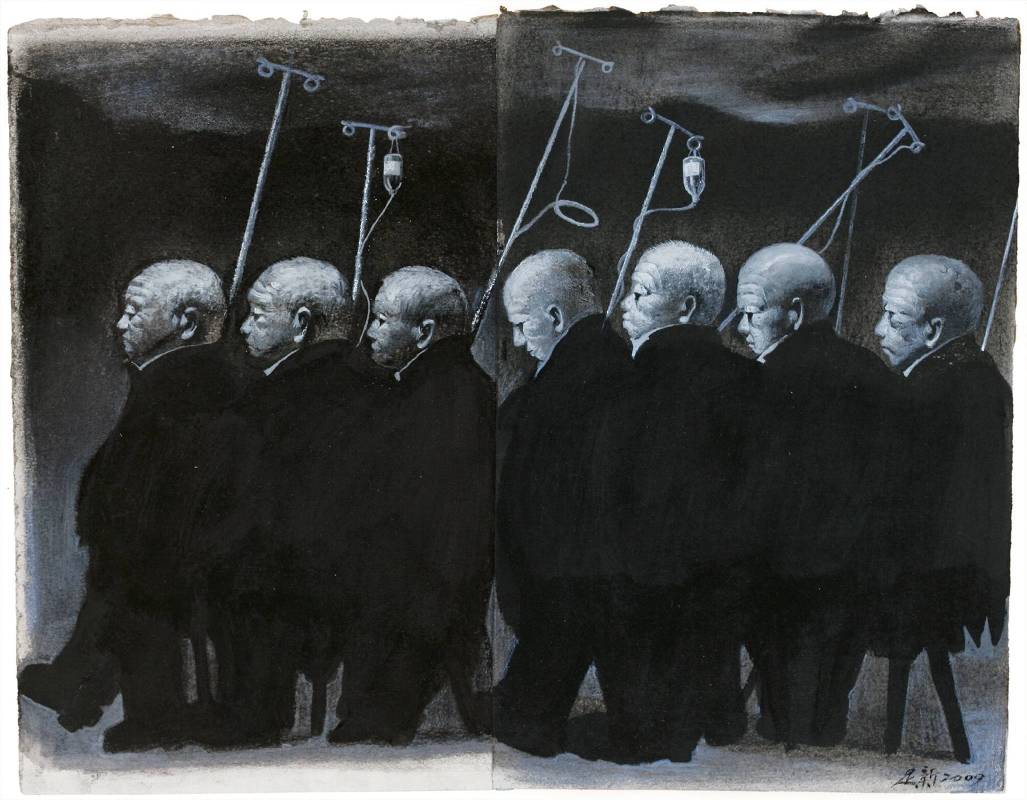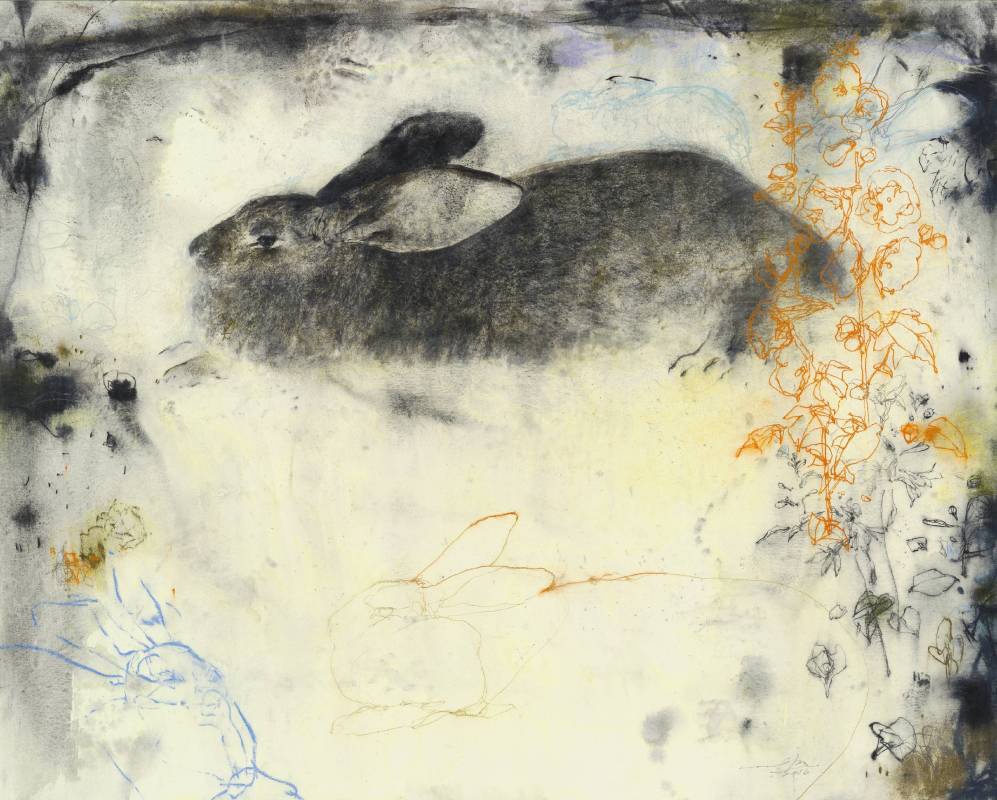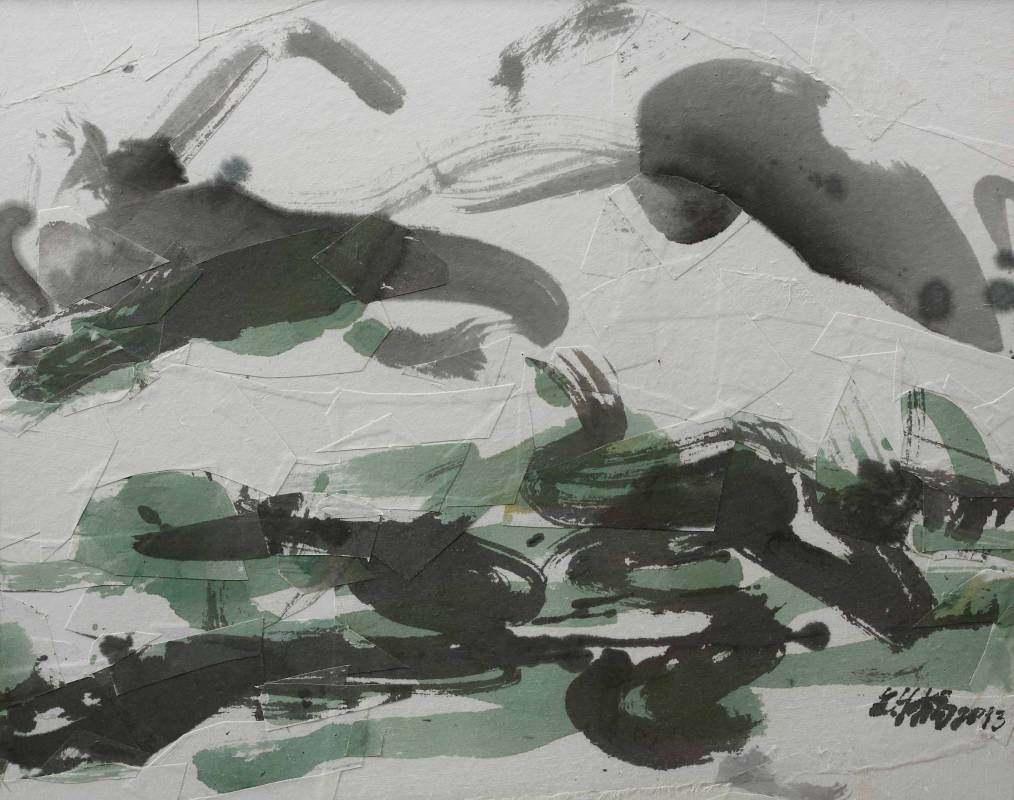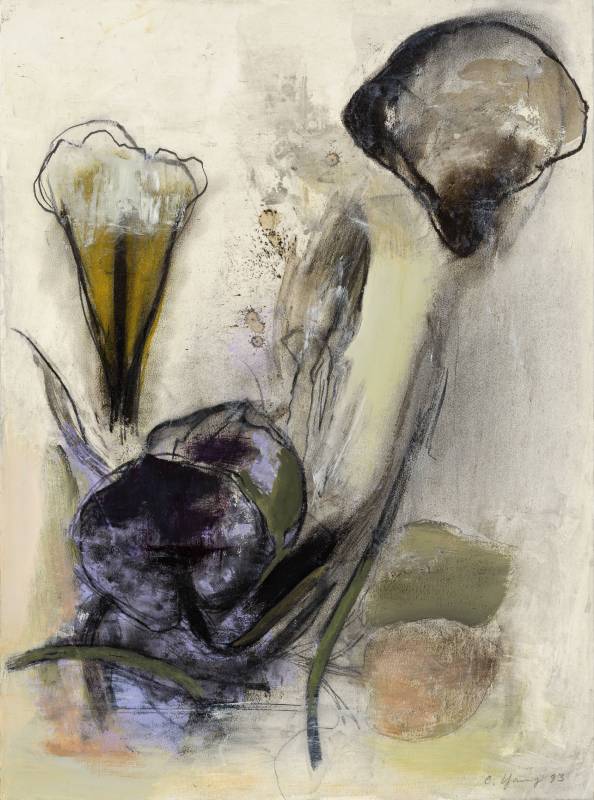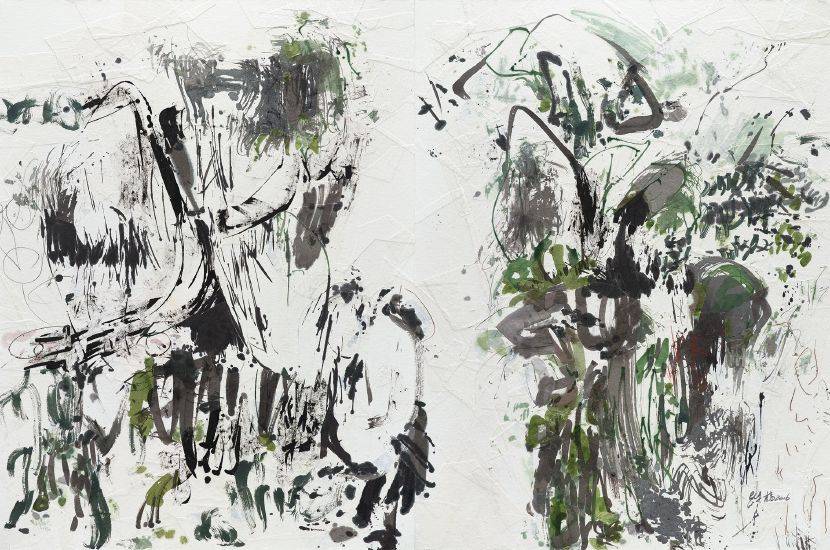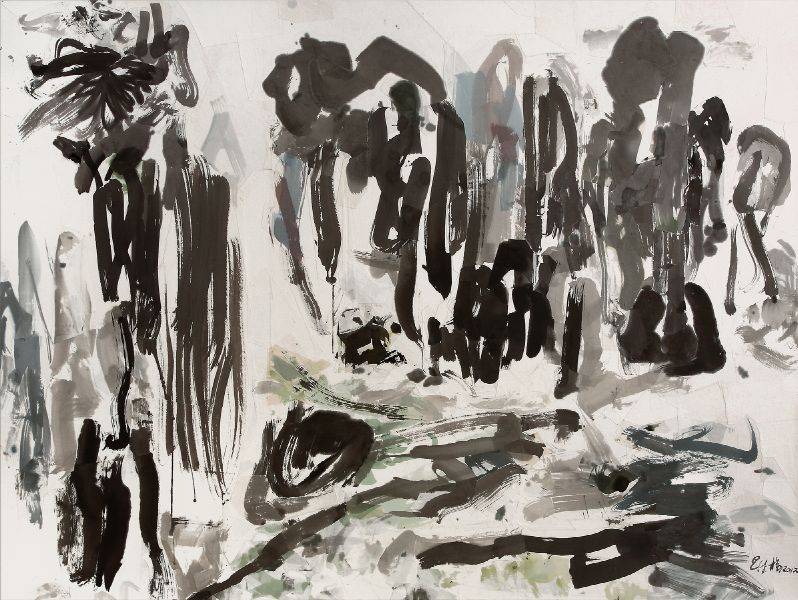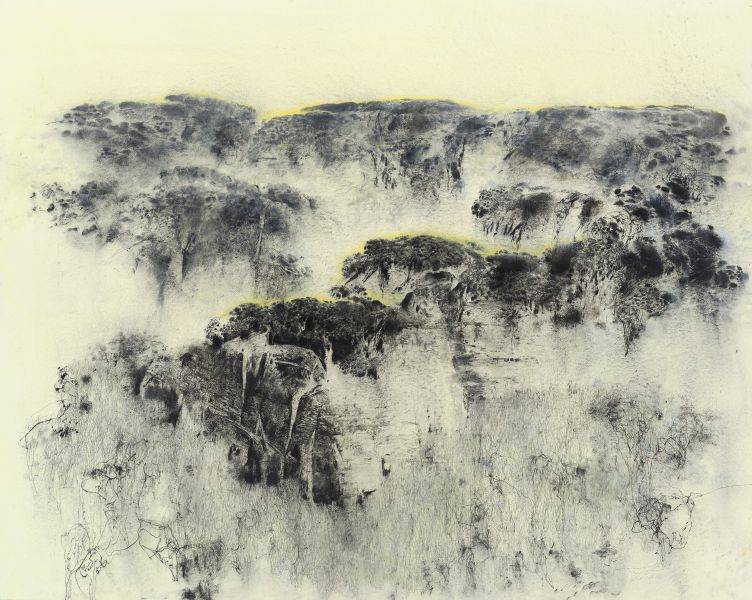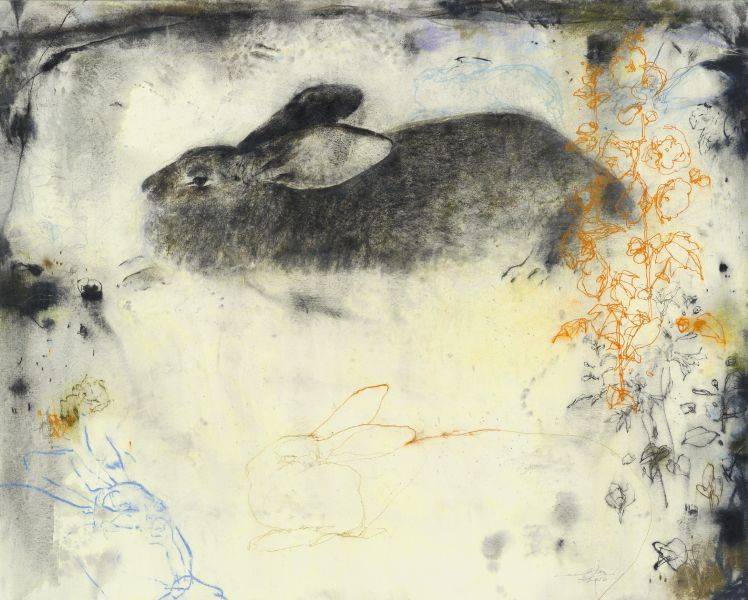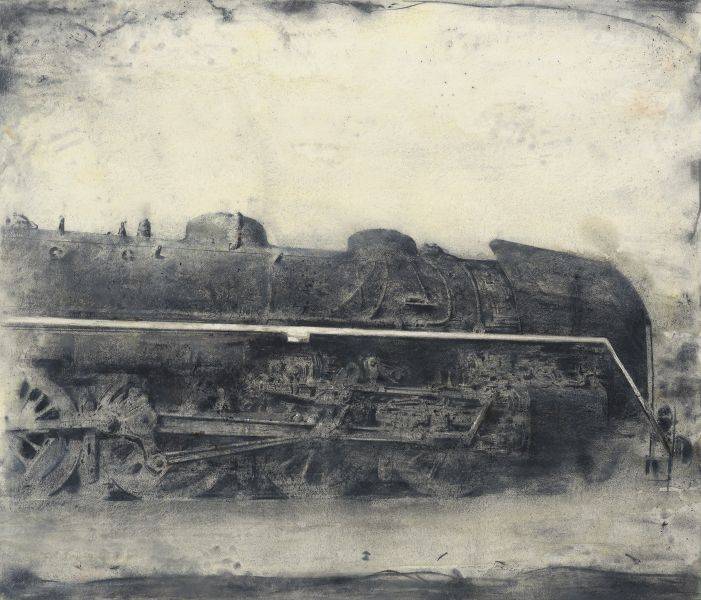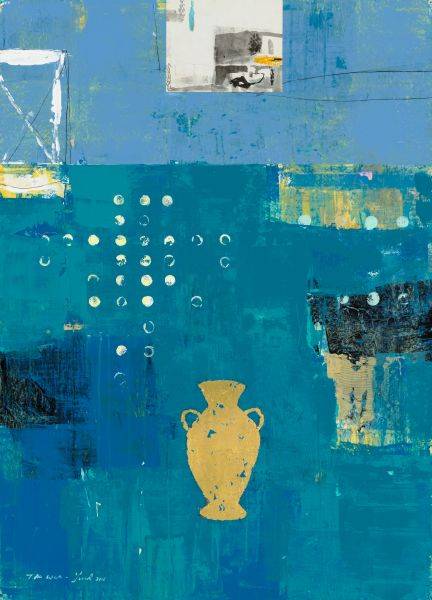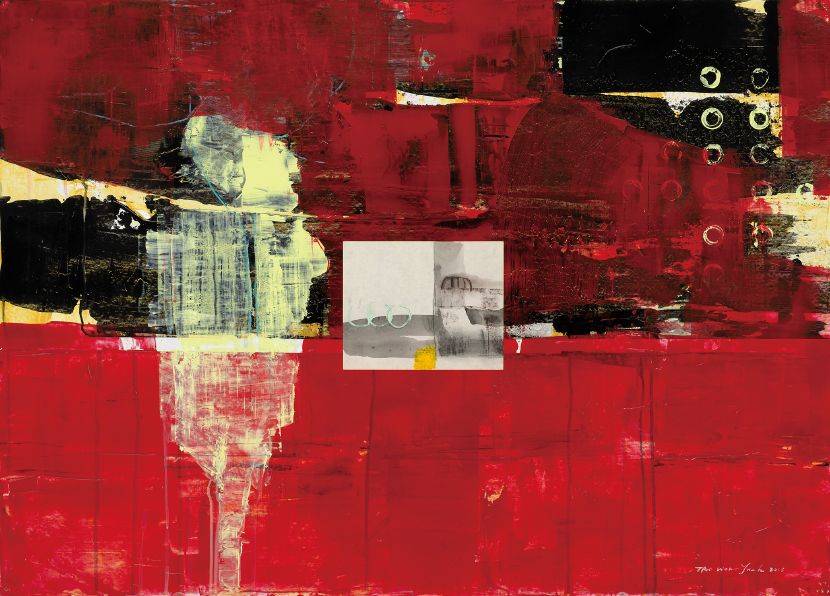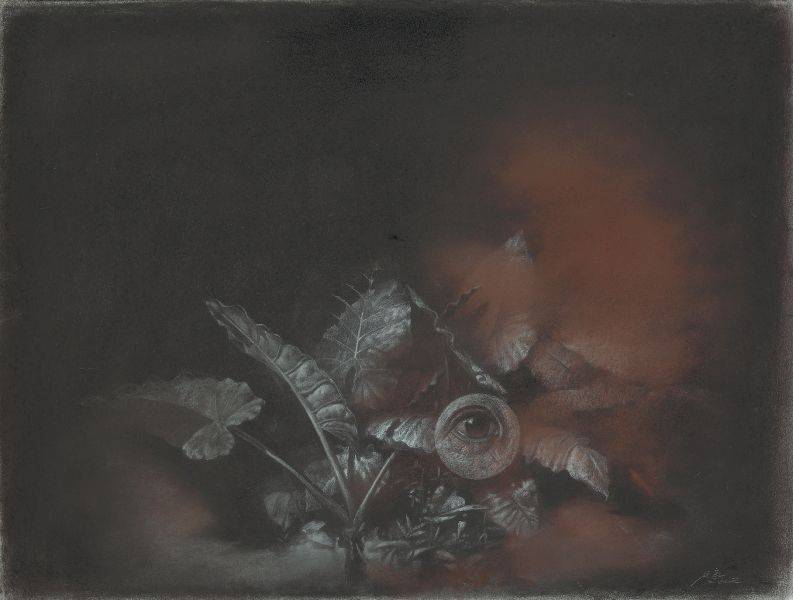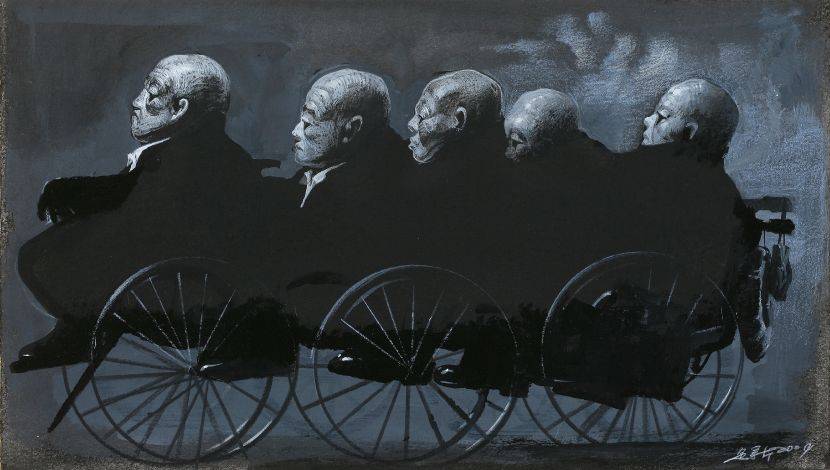赤粒藝術
【以紙為尊】楊識宏、楊世芝、梁兆熙、陶文岳、李足新五人展
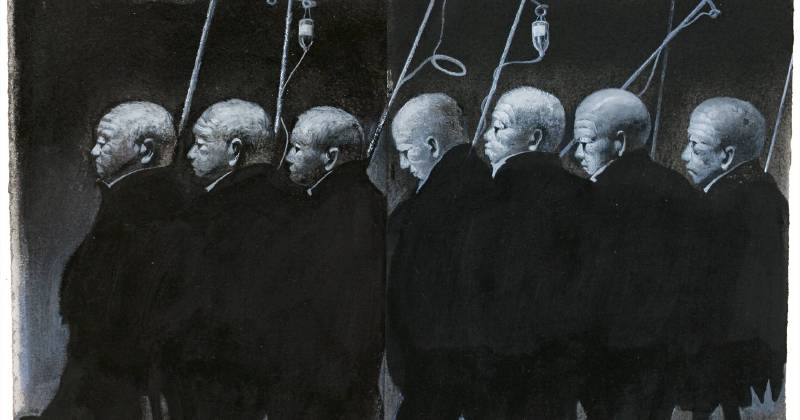
-
如果說英國國家畫廊與泰特美術館是前二十世紀油畫與近當代藝術資料庫,大英博物館就是國家級「紙上作品」藏寶窟,這座寶窟相對於其他熱門館藏較不為人所知,「版畫素描部門」收藏兩百萬幅版畫,五萬幅素描;民眾如果先行預約就能與心儀的作品至少單獨「約會」一小時,享受短暫擁有拉斐爾「女先知」或透納速寫本的熱情。一位相關部門管理人形容,「這一切都是為了樂趣」。
是的,都是為了樂趣。
相對於油彩與畫布,藉由水彩、墨水、鉛筆、炭筆或木炭,以及混合媒材表現在畫紙上的作品,本質上相對更直接,或者說,更生猛(raw),畫家透過這種直接而生猛的方式展現對事物觀看與思考的過程,那麼,看畫的人透過這些「紙上作品」能不能感受這股直接與生猛的力道?觀眾「閱讀」畫家觀看的過程,「思考」畫家思考的過程,進一步建立屬於自己「閱讀與思考」的過程;當「紙上」與「紙外」的力道狹路相逢,將會擦撞出什麼樣的火花與樂趣?這就是我們提出的邀請與問題。
楊識宏揮灑混合媒材,以紙上作品記錄一個東方人在紐約的生活與創作過程;衝擊與融合,阻力與助力,抽象與具象,傳統與現代...展現「規律的騷動」。
楊世芝以水墨為媒材,以繁複拼貼為技法,創作元氣淋漓的當代藝術,看見油畫肌理卻不是油畫,看似山水卻不是山水,看不見性別與年齡,看得見畫家的戰鬥熱情...
梁兆熙以木炭擬物寫景,孤高顧盼的孔雀,孤獨休憩的野兔,人跡罕至的空山密林,時光凝節的火車頭;黑白之間,第一眼儒雅,第二眼深沉,第三眼...
陶文岳的創作如同紀錄生活情感的日記,縱橫創造在多元意念、材質世界裡,主動從靈魂中挖掘詩意的沈澱,在現象中感招藝術。
李足新補捉自然的鄉愁意象,畫家生命經驗疊合在歷史人文的洪流裡,自然景物被其羅織隱藏於黝暗時空氛圍中,呈現出神秘氣質。
感謝王嘉驥慨然提供威廉‧透納的引言,為這次展覽定調註解:First of all, respect your paper! Keep your corners quiet. Centre your interest. And always remember that as you can never reach the brilliancy of nature, you need never be afraid to put your brightest light next to your deepest shadow in the centre but not in the corners of your picture.
讓我們以這位「光之畫家」的話作結:首先,以紙為尊!邊邊角角無需張揚,專注凸顯畫作重點。記住,自然之美,人力永遠無法企及,不必害怕將最明亮的光線與最深沉的陰影並列畫作中央。
If the National Gallery and the Tate galleries serve as a database of oil paintings from the 20th century and the modern and contemporary art, then the British Museum is a national treasure house of “works on paper.” Relatively unknown compared to other sought-after sections in this treasure house, the Department of Prints and Drawings boasts a collection of approximately two million prints and 50,000 drawings. Visitors who have made a reservation in advance can “date” their beloved works for at least an hour, savoring Raphael's Sybil or William Turner’s sketchbook to the fullest. Just as described by a keeper from a related department, “It’s all for the fun.”
Yes, it’s all for the fun.
As opposed to putting oil paint to canvas, the method of applying watercolor, ink, pencils, charcoal pencil or charcoal to the paper in the form of mixed media is inherently more direct, or raw. Could the viewer sense in these “works on paper” the directness and rawness with which the painter demonstrates how he views and thinks about the subject? The viewer “reads” the viewing process of the painter, and “thinks” about the thinking process of the painter, thus establishing his own process of “reading and thinking.” What dynamism and excitement would arise from the meeting of two forces–“on the paper” and “outside the paper”? This is the proposition and question we would like to pose.
By composing works on paper with mixed media, Yang Chihung documents the experience of an Eastern living and creating in New York. It embodies “an orderly commotion,” resulting from encounters between impact and blending, obstacle and catalyst, abstract and concrete, as well as traditional and modern.
Yang Shihchih utilizes ink and water as the media, and complicated collage as the approach in creating energetic modern artworks. They are not oil paintings despite their oil painting textures, nor are they landscape ink paintings in spite of an ink-and-water look. While gender or age remains unsaid in her works, you can see the painter’s undaunted fighting spirit....
Liang Zhaoxi depicts landscapes and subjects with charcoal, from the peacock with an aloof stare, the rabbit resting solitarily, the mountain and forests rarely visited, to the locomotive where time stops. Between black and white, they are gentle at first sight, profound at the second, and at the third glance….
Tao Wenyueh keeps track of his daily feelings and emotions in his works. By creating in diverse contexts and the physical world, he seeks poetic reflections from the soul, drawing inspirations from surrounding phenomena.
Lee Chuhsin captures nostalgic imagery in the nature, casting the life experience of the painter into the historical and cultural currents. Natural landscapes are woven into dark reaches of time and space, enveloped in a mysterious atmosphere.
Thanks to Chia Chi Jason Wang’s sharing of William Turner’s words, we may define the exhibition as follows: “First of all, respect your paper! Keep your corners quiet. Centre your interest. And always remember that as you can never reach the brilliancy of nature, you need never be afraid to put your brightest light next to your deepest shadow in the centre but not in the corners of your picture.”
So let’s close with the words of “the painter of light.”
推薦展覽
view all赤粒藝術
【遠山疎樹李茂成個展】Scattered Trees and Distant Mountains: Solo Exhibition of LEE Mau-cheng
日期:2024-06-22 ~ 2024-08-04|台灣,台北市
赤粒藝術
【自然與記憶梁兆熙2024個展】Nature and Remembrance: Solo Exhibition of LIANG Zhaoxi
日期:2024-05-04 ~ 2024-06-16|台灣,台北市
